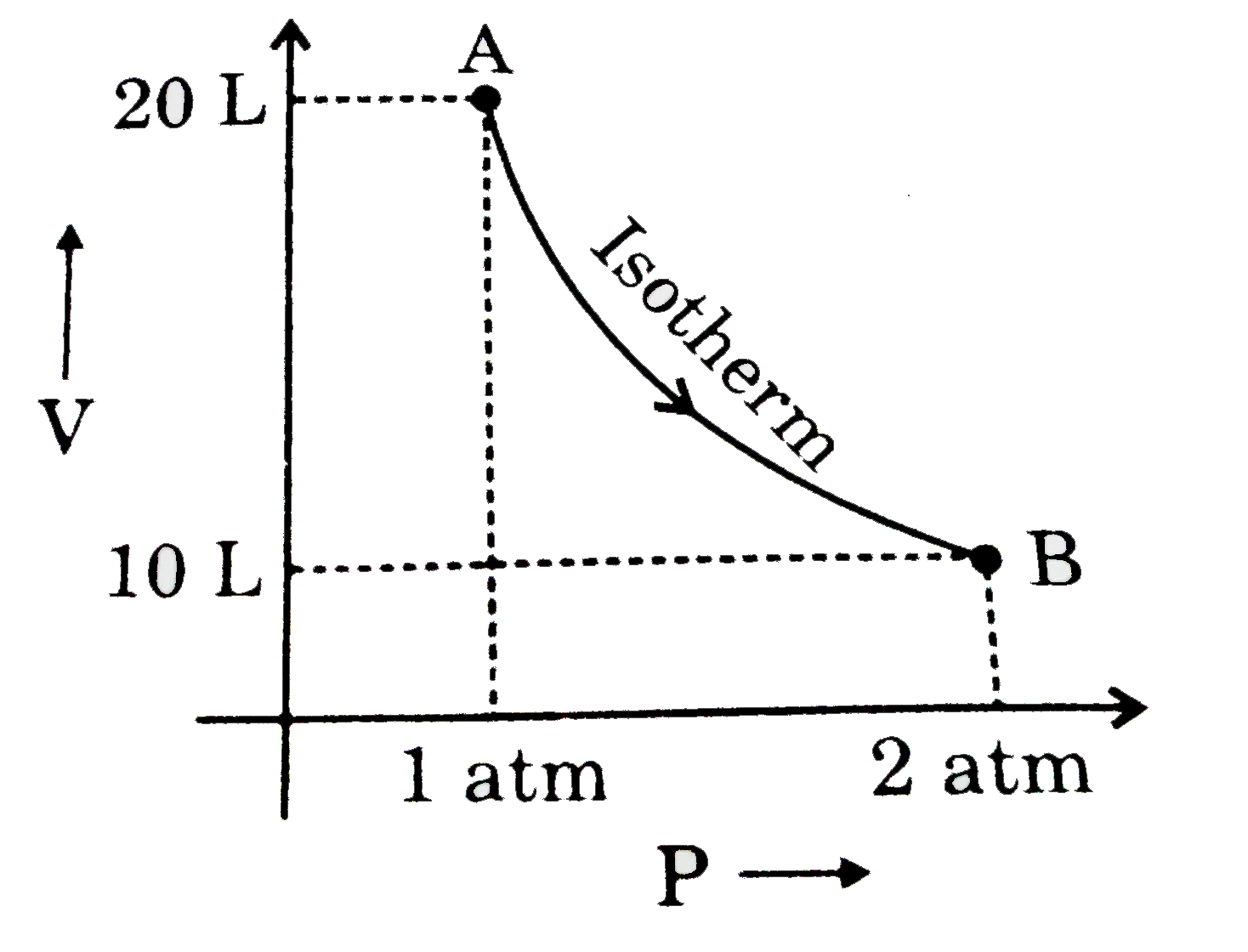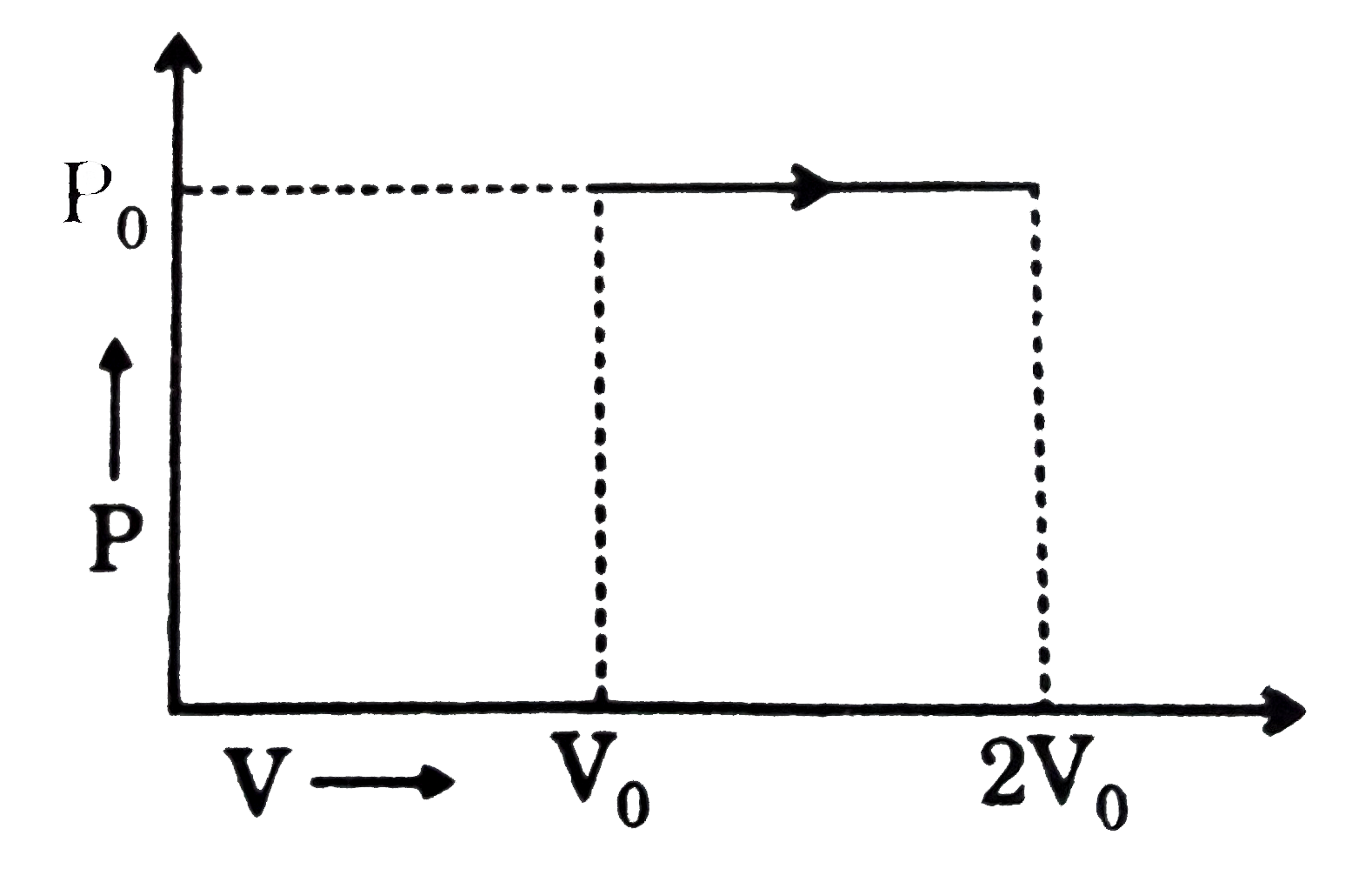Find the heat absorbed by an ideal gas (in kJ)w it follows the graph (given below) during isothermal expansion [ln 2 = 0.7]
[Tale: 1 litre-bar = 0.1 kJ]
![Find the heat absorbed by an ideal gas (in kJ)w it follows the graph (given below) during isothermal expansion [ln 2 = 0.7] [Tale: 1 litre-bar = 0.1 kJ]](https://d10lpgp6xz60nq.cloudfront.net/physics_images/GRB_PHY_CHM_P2_V03_QB_C13_E01_428_Q01.png)
The correct Answer is:7
Step by step video, text & image solution for Find the heat absorbed by an ideal gas (in kJ)w it follows the graph (given below) during isothermal expansion [ln 2 = 0.7] [Tale: 1 litre-bar = 0.1 kJ] by Chemistry experts to help you in doubts & scoring excellent marks in Class 12 exams.
Topper's Solved these Questions
- BOOK - GRB PUBLICATIONCHAPTER - GRAPHICAL INTERPRETATIONEXERCISE - Match The Column Type15videos
GRAPHICAL INTERPRETATION
- BOOK - GRB PUBLICATIONCHAPTER - F-BLOCK ELEMENTSEXERCISE - Subjective type7videos
F-BLOCK ELEMENTS
- BOOK - GRB PUBLICATIONCHAPTER - HYDROCARBON (ALIPHATIC)EXERCISE - Previous years jee questions28videos
HYDROCARBON (ALIPHATIC)
Similar Questions
Calculate ΔG (in L atm) from the graph of an ideal gas undergoing process AB. [Take: ln 2 = 0.7]
 View Solution
View Solution
An ideal gas undergoes a cyclic process, in which one process is isochoric, one process is isothermal and one process is adiabatic. During the isothermal process, 40 J heat is released by the gas, and during the isochoric process, 80 J heat is absorbed by the gas. if work done by the gas during adiabatic process is W1 and during isothermal process is W2 then the magnitude of W1W2 will be equal to:View Solution
Knowledge Check
- Question 1 - Select One
Work done during isothermal expansion of one mole of an ideal gas from 10 atm to 1atm at 300 k is
A-4938.8JB4138.8JC-5744.1JD6257.2J - Question 2 - Select One
Statement-1.During isothermal expansion of an ideal gas, there is no change in the internal energy.
Statement -2.During isothermal expansion of an ideal gas , as temperature remains constant, no heat enters or leaves the system.AStatement -1 is True, Statement-2 is True, Statement-2 is a correct explanation of Statement-1BStatement-1 is True, Statement-2 is True, Statement-2 is NOT a correct explanation for Statement -1.CStatement-1 is True, Statement-2 is False.DStatement-1 is False, Statement-2 is True - Question 3 - Select One
Maximum heat absorbed during isothermal expansion of an ideal gas from (10 atm, 1 L) to (1 atm, 10 L) is :
A90 atm-LB10 atm-LC9 atm-LD23.03 atm-L
One mole of an ideal gas at 27∘ ,8.21 atm absorbs 420 cal of heat during a reversible isothermal expansion. Calculate the final volume (in litre) of gas. [Use:R=0.0821 litre-atm/K-mole]
View SolutionThe final volume (in L ) of one mole of an ideal gas initially at 27∘C and 8.21 atm pressure,if it absorbs 420 cal of heat during a reversible isothermal expansion is (ln2=0.7)
View SolutionA commercial gas cylinder contains 75 litres of helium at 15 bar (gauge pressure). Assuming ideal gas behaviour for the isothermal expansion, how many 3-litre balloons at a pressure of 1.1 bar can be filled by the gas in this cylinder?
View Solution2 moles of an ideal gas is expanded isothermically and revrsibly from 1 litre to 10 litre. Find the enthalapy change in kJ mol−1.
View SolutionIf the internal energy of an ideal gas varies as U=2PV and the gas undergoes an expansion as shown below, then heat absorbed in the process will be :
 View Solution
View Solution

